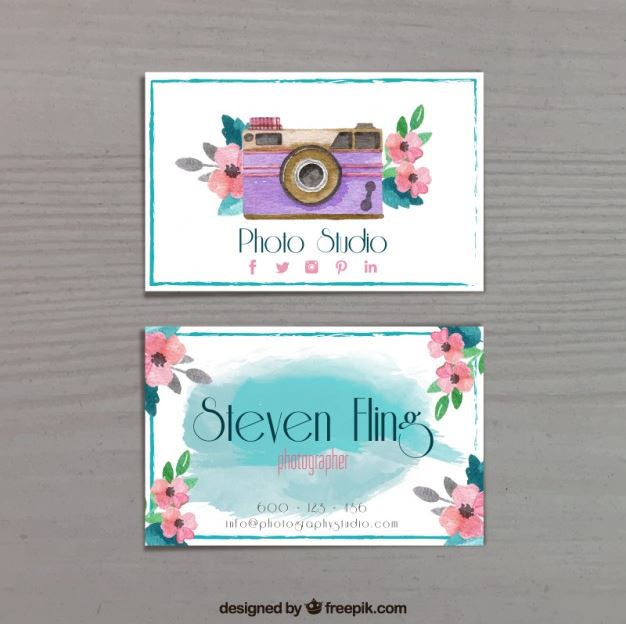Business cards remain one of the hallmarks of the service business. It allows you to market yourself to people you meet while on the job. It is a great way to get your name out there, whether you’re posting business cards on bulletin boards or handing them out at networking events. The challenge is coming up with a great business card. Here are a few tips for designing a business card for photography business use.

Emphasize the Logo
Your logo is your signature, or at least, it should be. Your logo may be watermarked in the images you take, and it should be part of your advertising. It will be more memorable than the sample photos you put on your business card. You can include a picture of yourself on your business card, but that should be secondary to the logo. Note that you can put the logo on both sides of the business card to maximize the impression it leaves.
Make Photography Samples Shine
A common tactic with photography business cards is to put a sample of their work on the back of the business card. This isn’t as worthwhile as people think. A generic landscape photo isn’t going to make people think of doing anything with the card. They may not even realize it is a business card, and if it looks like a decorative coaster, they won’t turn it over. A business card with a wedding photo or portrait on the back may not be marred by a drinking glass, but that doesn’t mean people will pick it up and take it with them. They may leave it thinking others will find it. This means you need to frame photos literally along with your contact information so that others realize your business card is a business card.
At the same time, several small thumbnail shots crammed on a business card don’t do your work justice. The beautiful images become blurred by printing and the smaller size. The solution is to have just one classic image as large as you can make it on each side of the business card. Position it so that your contact information is easily read.
Don’t Forget the Purpose of the Business Card
The purpose of a business card is to promote your business. Do place one or two “sample” images on your business card, if you choose to go that route. However, you must prioritize the classic contact information quartet: name / business name, address, phone number and email address. A website can be listed underneath that. All of this text must be clearly visible on the card and legible. That means you can’t print the contact information over the photo. (That also gives people the impression that your photos are marred.)
Remember the Impact Business Card Quality Has on Your First Impression
If you use cheap business card stock, it will undermine the perceived quality of your work from the very beginning. Choose solid, moderate gloss business cards. The extra thick paper shows care and dedication, while the modest shine makes the images pop.

